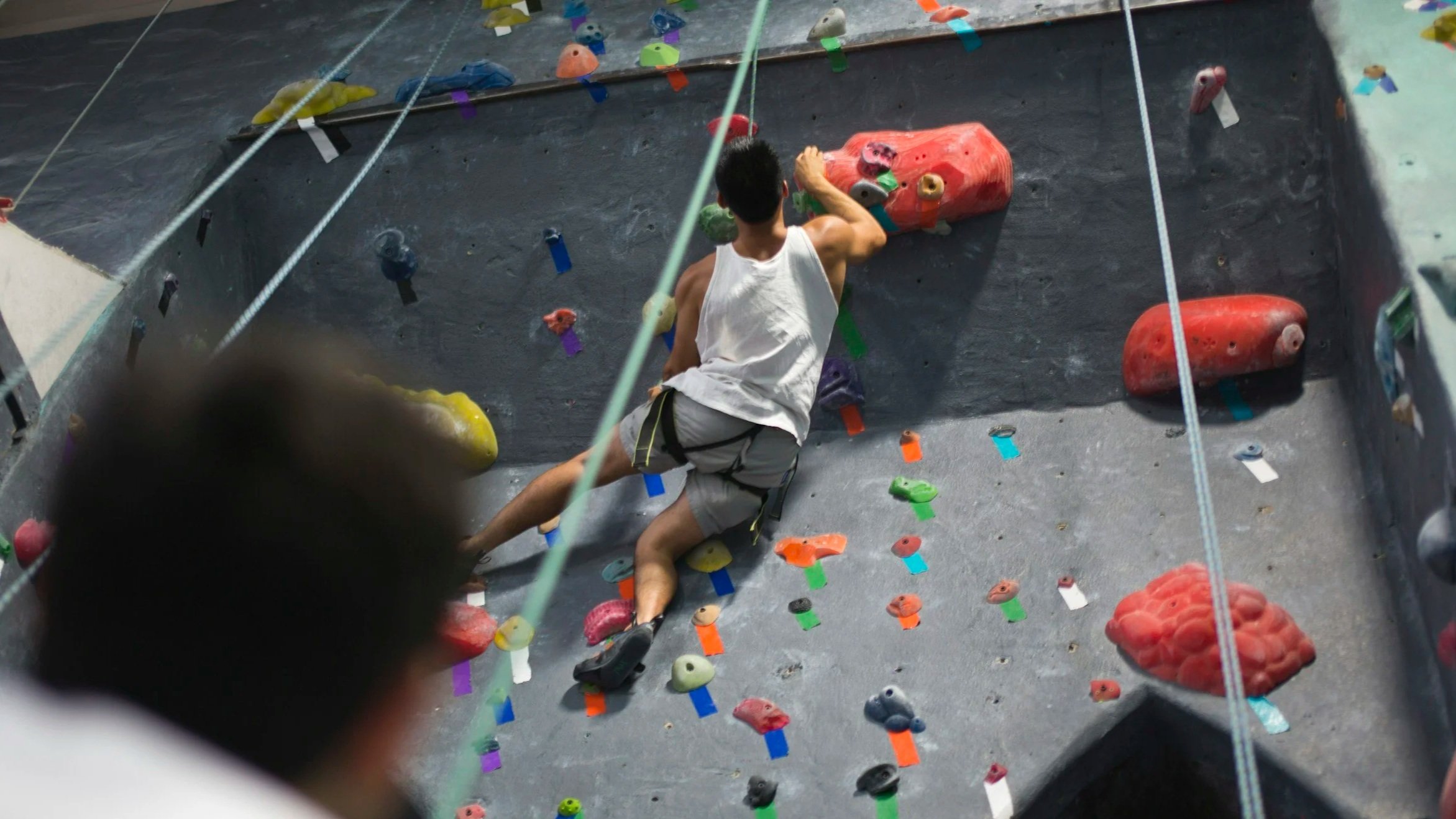Get a Grip: The Power of Climbing
Climbing is more than a sport – a unique blend of brain-body training that builds long-term resilience. Climbing-based movement trains more than your body, it also sharpens your mind.
Climbing challenges grip, control, spatial awareness, and coordination, often under fatigue. Whether you’re at an indoor bouldering gym or clambering over obstacles outdoors, climbing:
Builds full-body functional strength
Improves grip endurance and joint control
Sharpens mental focus and spatial awareness
Boosts confidence, resilience, and persistence
Encourages playful exploration and stress release
You don’t need to be an elite athlete to benefit. Kids, beginners, and weekend warriors can all access the brain and body benefits of climbing-style training.
Climbing Demands Smart Movement
Climbing isn’t just about brute strength. It’s about control, timing, and using leverage (not force) to your advantage.
From a functional perspective, climbing offers:
High grip demand under dynamic conditions
Scapular and shoulder control through multiple planes
Core activation to stabilise midline while reaching or rotating
Neuromuscular coordination between limbs
Mental focus and decision-making under pressure
More than Grip and Grit – Cognitive Benefits
Climbing activates brain regions responsible for problem-solving, working memory, and sensory-motor integration. Every route is a physical puzzle — requiring strategic thinking, awareness of body position, and moment-to-moment adaptation.
This constant interplay of planning and execution is one reason climbing supports:
Faster reaction time
Improved emotional regulation
Mental clarity under fatigue
These are benefits that extend far beyond sport — into work, learning, and daily life.
“Climbing forces you to connect your brain to your body. You can’t just switch off and muscle your way through it.”
Tommy coltman, chiropractor (and climber)
Where Things Break Down
It’s not usually the big dynamic moves that cause issues — it’s the repeated little compensations that add up.
In clinic, we commonly see climbers with:
Overworked forearms and elbows (tendinopathies, grip fatigue)
Shoulder instability or compensatory patterns
Limited thoracic mobility reducing reach efficiency
Core fatigue affecting body control under load
Repetitive load injuries from volume without movement variety
5 Tips to Optimise Your Climb
Train grip endurance, not just strength
Use submaximal hangs, loaded carries, and controlled reps to build resilience.Prioritise scapular control
Your shoulders are your suspension system. Train with scap-focused drills like wall slides and scap pull-ups.Rotate your loading
Change grip types, surfaces, and movement planes to reduce repetitive strain.Don’t forget breath and bracing
Practice breath control during holds and core engagement through movement.Recover like a pro
Include active recovery, mobility work, and tissue care in your weekly routine
How We Support Climbers
Climbing is one of the most functional and mentally engaging forms of movement available. But its rewards come with risk — unless you train with purpose. It’s about staying consistent — being able to train, adapt, and come back for more.
We work with climbers and hybrid athletes to:
Assess joint mobility and movement patterns
Improve shoulder and grip function
Retrain motor control for injury prevention
Manage recovery and training load across weeks and cycles



